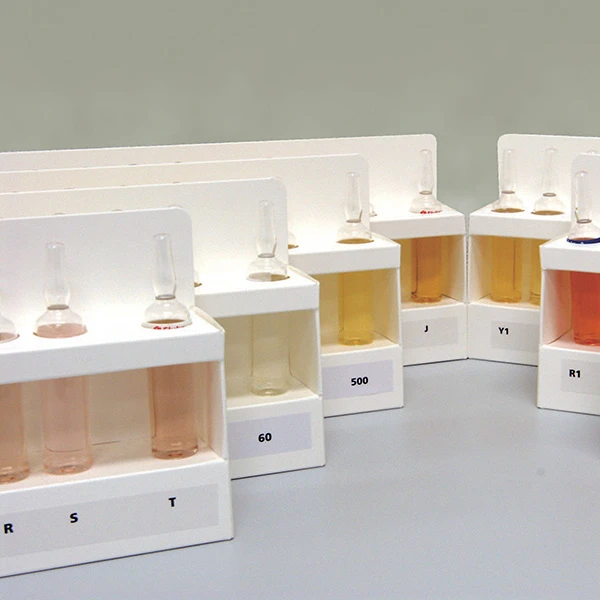APHA Color Measurement of Chemicals

Chemicals are used extensively in the manufacture of products such as plastic, rubber, paint and automotive parts. The chemicals used are not only required to be of a specified quality, but also of a specific color which relates to its quality that will adversely influence the finished product appearance. Color space like CIE L*a*b* and CIE L*C*h are widely used for color control application. But for routine grading of liquid chemical products that are clear or slightly yellow tinted, it is often simpler to use common industrial standard color scale like APHA Color.
APHA color, also referred to as Hazen or Platinum Cobalt (Pt/Co) scale, is a single-number color scale with a range from 0 (achromatic clear) to 500 (light yellow). It was originally developed as a visual color assessment of water quality by comparing with dilutions of a platinum-cobalt stock solution. Since then, its usage has expanded to polymer additives, resin solutions and solvents like glycerol and methanol.
Visual assessment using the APHA color scale is highly subjective. The surrounding background and ambient lighting can greatly influence visual judgement. Spectrophotometer CM-5 with preloaded indices such as APHA/Hazen, Gardner and Iodine Color Number, provides an objective quantification in an enclosed and controlled environment with better precision than the visual method. A lower than expected APHA value may indicate sample being off-hue. A high value indicates the hue of the sample may be correct, but more saturated than the upper limit of the stock solution. For this, it is recommended to use Gardner Index or CIE L*a*b* color space.
Check out this video to learn more about CM-5.
Get in touch with us for a free product demonstration or consultation on objective color assessment and quality control of chemical products.

